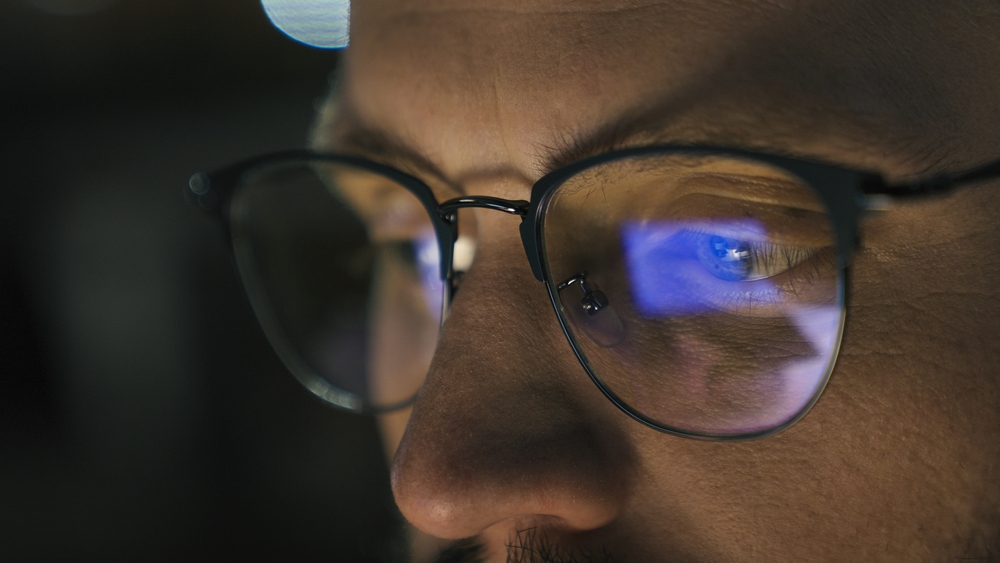
In today’s digital world, screen time has become an unavoidable part of daily life. Whether for work, entertainment, or social interaction, people spend hours staring at computers, smartphones, and tablets. While convenient, excessive screen use can take a toll on eye health, leading to an increasingly common condition—dry eye syndrome.
How Digital Screens Contribute to Dry Eyes
Prolonged screen use impacts tear production and quality in several ways. When focusing on digital screens, people tend to blink less frequently. Blinking is essential for spreading tears evenly across the eye's surface, keeping them hydrated and comfortable. A reduced blink rate can lead to tear evaporation and dryness.
Staring at a screen for long periods can also cause the eyes to stay open wider than usual, exposing more of the ocular surface to air and accelerating tear evaporation. Prolonged exposure to blue light emitted from screens can contribute to eye strain and discomfort, worsening dry eye symptoms.
Common Symptoms of Dry Eye Syndrome
Individuals who spend long hours in front of screens may experience symptoms such as:
• Gritty or burning sensation in the eyes
• Redness and irritation
• Blurred vision
• Sensitivity to light
• Watery eyes
Ignoring these symptoms can lead to chronic discomfort and potential long-term damage to the eyes.
Prevention Strategies for Digital Screen-Related Dry Eye
While it may not be possible to eliminate screen use entirely, implementing these strategies can help prevent and manage dry eye symptoms:
• Follow the 20-20-20 Rule – Every 20 minutes, take a 20-second break and look at something 20 feet away to reduce eye strain.
• Increase Blinking Awareness – Make a conscious effort to blink more frequently while using screens to maintain proper tear film distribution.
• Adjust Screen Settings – Reduce screen brightness and use blue light filters to minimize strain on the eyes.
• Use Artificial Tears – Lubricating eye drops can help maintain moisture and reduce discomfort.
• Optimize Your Workspace – Position screens slightly below eye level and maintain an ergonomic setup to reduce eye fatigue.
• Control Humidity Levels – Using a humidifier can help combat dry indoor air and keep eyes more comfortable.
For those experiencing persistent dry eye symptoms, Vision Best Eyecare offers state-of-the-art treatments designed to address the root cause of dryness and restore eye comfort.
Radiofrequency (RF) Therapy
This innovative treatment uses controlled radiofrequency energy to gently heat the eyelid area, stimulating the meibomian glands. These glands produce the oil layer of tears, preventing excessive evaporation. Forma I RF therapy improves tear stability, reduces inflammation, and enhances overall eye comfort.
Intense Pulsed Light (IPL) Therapy
IPL therapy is an effective treatment for dry eye caused by meibomian gland dysfunction (MGD). By delivering gentle pulses of light to the skin around the eyes, IPL reduces inflammation, stimulates gland function, and promotes better tear production. This treatment is particularly beneficial for individuals with chronic dry eye or rosacea-related ocular issues.
Schedule Your Dry Eye Consultation Today
With the increasing reliance on digital devices, dry eye syndrome has become a widespread concern. Understanding the connection between screen use and dry eye symptoms is the first step toward prevention and relief. By incorporating simple lifestyle changes and seeking advanced treatment when needed, individuals can maintain long-term eye comfort and health.
If you're experiencing persistent dry eye symptoms, contact Vision Best Eyecare to schedule your dry eye evaluation and take the first step toward healthier, more comfortable vision. Visit our office in Knoxville, Tennessee, or call (865) 288-3418 to book an appointment today.







